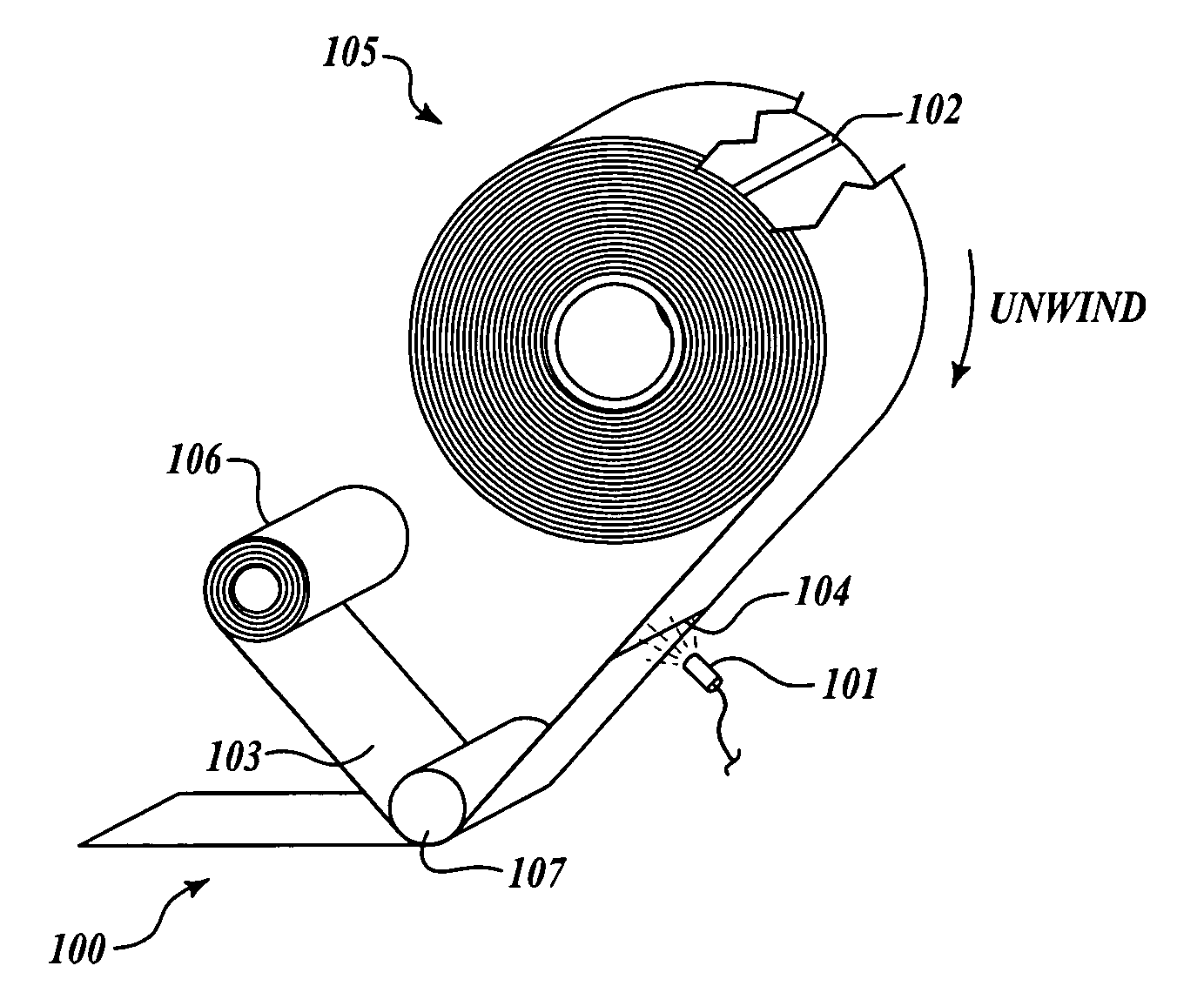Systems and methods for tape flaw and splice avoidance in manufacturing
a technology of composite tapes and tape rolls, applied in the direction of liquid/solution decomposition chemical coating, mechanical control devices, instruments, etc., can solve the problems of tape length loss, similar problems, and inability to register flaws or splices in rolls of tapes,
- Summary
- Abstract
- Description
- Claims
- Application Information
AI Technical Summary
Benefits of technology
Problems solved by technology
Method used
Image
Examples
Embodiment Construction
[0018]The present invention relates to systems and methods for avoiding tape flaws or splices in manufacturing, and for encountering and avoiding the end of a tape roll within a partially completed course of tape, including manufacturing of composite structures. Many specific details of certain embodiments of the invention are set forth in the following description and in FIGS. 1-9 to provide a through understanding of embodiments. The present invention may have additional embodiments, or may be practiced without one or more of the details described below.
[0019]Generally, embodiments of systems and methods in accordance with the present invention provide advance reference and tracking of tape flaws or splices as a tape is unwound during use for manufacturing. Thus, embodiments of the present invention may advantageously reduce the inaccuracies in referencing and tracking flaws or splices in a tape, and may improve efficiency and reduce costs associated with manufacturing components ...
PUM
| Property | Measurement | Unit |
|---|---|---|
| distance | aaaaa | aaaaa |
| distance | aaaaa | aaaaa |
| distance | aaaaa | aaaaa |
Abstract
Description
Claims
Application Information
 Login to View More
Login to View More - R&D
- Intellectual Property
- Life Sciences
- Materials
- Tech Scout
- Unparalleled Data Quality
- Higher Quality Content
- 60% Fewer Hallucinations
Browse by: Latest US Patents, China's latest patents, Technical Efficacy Thesaurus, Application Domain, Technology Topic, Popular Technical Reports.
© 2025 PatSnap. All rights reserved.Legal|Privacy policy|Modern Slavery Act Transparency Statement|Sitemap|About US| Contact US: help@patsnap.com



